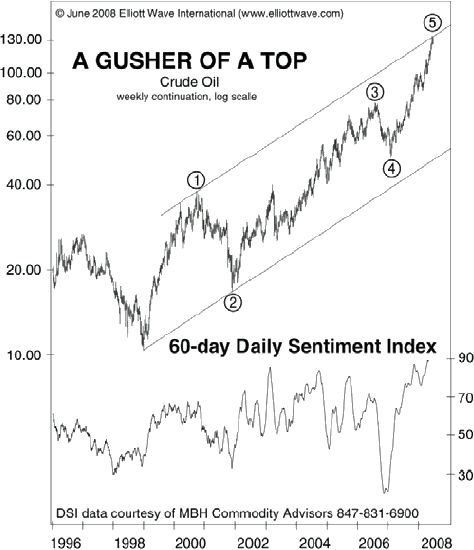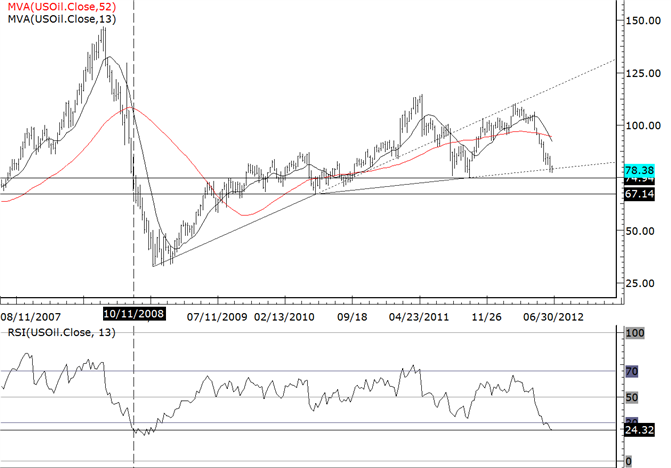Today’s Note:
Two weeks ago today we gave several presentations on the state of the economy in Virginia. We hosted more than 100 attendees. On Wednesday I presented in Richmond at the Country Club of Virginia and in Charlottesville at the University of Virginia. On Thursday we presented in Lynchburg, Virginia. We focused for 10 to 15 minutes in each presentation on 5 key questions:
1. Is this the start of a Great Deflation?
2. What will the Federal Reserve, Congress and the Administration do?
3. Are we now at the bottom of the equity market?
4. Supply and demand for copper and other minerals in the next few years?
5. Discovery Investing in the “Age of Austerity.”
Let’s review the subject matter, responses and conclusions from these questions:
Is This the Start of a Great Deflation?
The short answer is – “maybe.” One analyst said, “if nature takes its course yes, we will have a deflation.” The Great Deflation, like the Great Depression, is more than just a deflationary economic episode. The name itself connotes a once-in-a-lifetime episodic trauma. It connotes a time and place where prices will fall, money supply will shrink and debt load will decline. It is a time where GDP will decline and savings will increase as will the currency value. It will be “Great” because it will be global and it will accelerate — if it gets started.
Therein lies the problem – deflation is a process that contracts activity while it spirals and intensifies. This process is somewhat like that of hurricane intensification. These storms gain strength over warm waters of the Caribbean at this time of year and then finally play out over land. As asset values decline debt loads become more problematical, bankruptcies increase, GDP falls further, asset declines intensify and the process intensifies – till eventually the deleveraging and destruction of asset values is finally complete.
The signs are certainly all in the wings this AM. Despite the debt agreement in Europe and the knee –jerk reaction we are witnessing in the capital and commodity markets all is not well in “Leverageville.”
The M1 money multiplier has been contracting for 43 months since November 2008 when it fell below 1.0. In other words the American fractional banking system is not lending effectively relative to the money supply. Officials for the Bank for International Settlements note:
“Central banks are being cornered into prolonging monetary stimulus as governments drag their feet and adjustment is delayed,” the Basel, Switzerland-based BIS said in its annual report, published Sunday. “Both conventionally and unconventionally accommodative monetary policies are palliatives and have their limits.”
In other words Central Bankers are out of magic bullets. Chairman Bernanke said he could defeat deflation by using the printing pressi. That, according to the BIS, has not succeeded. (see B. Bernanke’s speech to National Economists Club, November 21, 2002, Deflation: Making Sure “It” Doesn’t Happen Here)
Meanwhile interest rates are essentially zero in the U.S. and elsewhere, banking contagion is spreading around Europe and Spain and Italy appear to be the next victims. Global deleveraging is very slow, too slow, and global growth is now slowing markedly. The recent Case Shiller housing price numbers are down 1.9% YOY, again part of the rubric that smells more like an asset deflation every month in spite of some evidence of bottoming. – not inflation. Inflation is the single remedy and the preferred outcome of the Central bankers of the world.
German austerity will be imposed eventually but it will be imposed by the rough, crude and accelerating momentum of the world’s markets. Banks have reduced their lending by 4% due to the need for higher reserve ratios.
Once mom and pop’s savings rates start to increase (to reduce personal debt levels) deflation will be fait accompli unless …. .
Irving Fisher developed a “Debt Deflation theory of Great Depressions” which was the title of his 1933 article in Econometrica, a top tier Economics journal.
http://fraser.stlouisfed.org/docs/meltzer/fisdeb33.pdf. This article is from the St Louis Federal Reserve and deserves to be read by everyone.
In it Fisher defined a “creed” of 49 articles. Fisher’s article 24 (see endnote) perhaps best sums up his rationale for the Great Depression and also, I believe, for where we stand today – on the precipice of another event of similar magnitudeii. By the way, Fisher also offers solutions. Here, he seems to sums up our present situation with respect to debt and deflation,
“No exhaustive list; can be given of the secondary variables affected by the two primary ones, debt and deflation; but they include especially seven, making in all at least nine variables, as follows: debts, circulating media, their velocity of circulation, price levels, net worths, profits, trade, business confidence, interest rates. … Evidently debt and deflation go far toward explaining a great mass of phenomena in a very simple logical way.”
What Will the Federal Reserve, Congress and the Administration Do?
Since our Federal Reserve seems to be out of “bullets” and since it is fractured literally down the middle between the Doves and Hawks we see very little benefit in more printing money. Indeed they will try something – perhaps another QE.
President Jeffrey Lacker at the Richmond Federal Reserve bank does not want to see any more “Twist” solutions. This reinforces the uncertainty at our Fed. The European Central bank (ECB) notes it is running out of “silver” bullets. We believe the Fed may now see the U.S. as entering or actually within a classical liquidity trap.
The Administration and Congress (both sides of the aisle) must now act to resolves the forthcoming “Fiscal Cliff” which will take effect on January 1, 2013 a short 185 days from today. If taxes increase (the dividend tax rate triples, etc.,) and spending is automatically cut as planned, a recession (CBO forecast) may push the economy into a deflationary spiral.
Furthermore U.S. economic and industrial restructuring following (forced?) deleveraging is most necessary. This will be a long term process. Japan is still in the grips of deflationary cycles from 1989’s bubble. Deleveraging here has to be soon … and … it will not be without pain. One wonders why the central bankers of the world have not yet seized on Irving Fisher’s debt insights.
Are We Now at the Bottom of the Equity Market?
No, not likely. Take a look at the performance of the TSXV shown below. Its performance, in line with those of the broad commodity indexes, has been shouting deflation for the past 15 months. There is now a lack of liquidity in the equity markets. Assets must be liquidated as debt loads are reduced. Markets will be under pressure. Company and management frugality and sustainability is clearly the most important of characteristics in this environment. (see point 5 below)
The Toronto Venture Exchange (TSXV) has declined 52% since March 7, 2011 well in advance of the current deflationary forces and certainly anticipating and then instigating asset liquidations. The index is now at a new 34 month low point. The Larger cap Toronto Exchange (TSX) has declined 21% and is near a 28 month low. Increased capital gains (200% increase?) and dividend tax are likely in store. These along with further government-sponsored financial repression of Americans (zero % Treasury yields), in addition to taxation, are further headwinds for capital markets and intermediate term economic growth in general.

The Supply and Demand for Copper / Other Minerals in the Next Few Years
Long term, the view here is bullish. Short term, the perspective is bearish. Copper has declined 29% in the past 16 months. However we do not see copper less than $2.50 / pound under any but the most severe macroeconomic circumstances. There are 4.5 billion people in Goldman Sachs Next 11 countries who will demand infrastructure in the next decade and there will be commodity buyers at lower prices to make a bottom. Further, copper (as are most minerals) is much harder to explore, develop and mine today and Freeport notes that the “new normal” in copper is .4% and in secure (economic) jurisdictions.
Look at Gold and Oil price declines. Price declines, especially those set in global markets bespeak of the oncoming deflationary forces in spite of the fact that cheaper energy is a big positive for the economy. We question whether oil is reacting solely to deflationary forces or to geopolitics of the Middle East, or both. Gold? Gold has broken through four levels of support and may now be poised to head lower. Both oil and gold bespeak of contraction. Funny, isn’t it, how energy prices decline in an election year?
Discovery Investing in the Age of Austerity
Discovery will continue to be critical to sustenance and perhaps improvement of our lifestyle. Discovery of resources (old and new) , medical treatments and therapies, high technology, materials sciences and energy systems are just a few fields of discovery interest to us.
Whether we like it or not austerity will be with us for quite a long time. German Chancellor Angela Merkel is correct and honest. Her only problem is that the word “austerity” is anathema to most politicians. It turns out the one way or another we will experience austerity as deleveraging and the unwinding of the current and broken credit cycle begins.
We will, dear Discovery Investor, be investing in the age of austerity for the foreseeable future. This is where we think the Discovery Investing Scoreboard (DiS) will shine. (www.discoveryboard.com). Originally developed to “score” or rank micro, small and midcap companies across all dimensions we now realize that several of the ten DiS factors you have at your disposal relate to the coming environment of austerity. In other words, we believe there is an increasing possibility for deflation. To refresh your memory, here are the 10 factors as shown below. Here is a teaching example of scoring Alexco’s “Financial Soundness.”

You may choose to score each factor, ignore a factor you are not sure of at the time, or select the crowd score for a factor. You do not have to be an expert to score a company but you can become an expert over time. We have made access to the DiS free to all and found that the DiS is a powerful tutorial and one that allows you to maintain portfolios of potential winners and losers.
I include the Decile 1 (top 10% ranked stocks) below as of June 26, 2012.


Factor 8 is called “Financial Soundness.” By this we mean balance sheet strength, cash and or sustaining cash flow from operations. More generally, in this environment, this means sustainability. This may be the key for selecting companies in the coming environment. We are inclined to rate this factor (and several others) as “Very important,” “Desired,” and perhaps “Mandatory” for a good score. Have fun and score your own companies whether or not you see deflation or inflation in our future. You will enjoy the DiS.
The material herein is for informational purposes only and is not intended to and does not constitute the rendering of investment advice or the solicitation of an offer to buy securities. The foregoing discussion contains forward-looking statements within the meaning of the Private Securities Litigation Reform Act of 1995 (The Act). In particular when used in the preceding discussion the words “plan,” confident that, believe, scheduled, expect, or intend to, and similar conditional expressions are intended to identify forward-looking statements subject to the safe harbor created by the ACT. Such statements are subject to certain risks and uncertainties and actual results could differ materially from those expressed in any of the forward looking statements. Such risks and uncertainties include, but are not limited to future events and financial performance of the company which are inherently uncertain and actual events and / or results may differ materially. We own shares in Goldcorp. These companies are not recommended as investments. In addition we may review investments that are not registered in the U.S. We cannot attest to nor certify the correctness of any information in this note. Please consult your financial advisor and perform your own due diligence before considering any companies mentioned in this informational bulletin
i Bernanke speech, “Like gold, U.S. dollars have value only to the extent that they are strictly limited in supply. But the U.S. government has a technology, called a printing press (or, today, its electronic equivalent), that allows it to produce as many U.S. dollars as it wishes at essentially no cost. By increasing the number of U.S. dollars in circulation, or even by credibly threatening to do so, the U.S. government can also reduce the value of a dollar in terms of goods and services, which is equivalent to raising the prices in dollars of those goods and services. We conclude that, under a paper-money system, a determined government can always generate higher spending and hence positive inflation.”
ii “24. Assuming, accordingly, that, at some point of time, (1) Debt liquidation leads to distress setting and to
(2) Contraction of deposit currency, as state of over-indebtedness exists, this will tend to lead to liquidation, through the alarm either of debtors or creditors or both. Then we may deduce the following chain of consequences in nine links:
bank loans are paid off, and to a slowing down of velocity of circulation. This contraction of deposits and of their velocity, precipitated by distress selling, causes
(3) A fall in the level of prices, in other words, a swelling of the dollar. Assuming, as above stated, that this fall of
prices is not interfered with by reflation or otherwise, there must be
(4) A still greater fall in the net worths of business, precipitating bankruptcies, and
(5) A like fall in profits, which in a ” capitalistic,” that is, a private-profit society, leads the concerns which are running at a
loss to make (6) A reduction in output, in trade and in employment of labor. These losses, bankruptcies, and unemployment, lead to
(7) Pessimism and loss of confidence, which in turn lead to
(8) Hoarding and slowing down still more the velocity of circulation. The above eight changes cause
(9) Complicated disturbances in the rates of interest, in particular, a fall in the nominal, or money, rates and a rise in the real, or commodity, rates of interest.




















